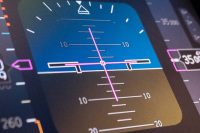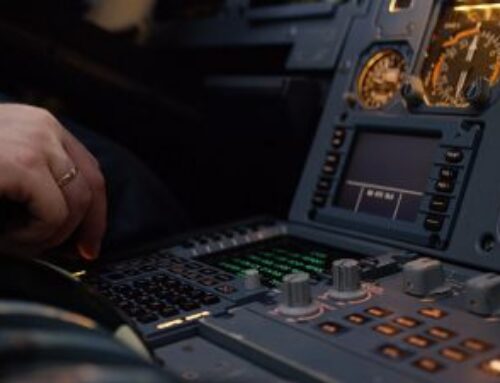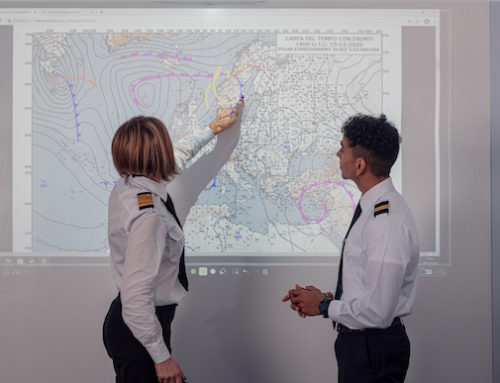The plane’s anti-collision system: how the Ground Proximity Warning System (GPWS) works

The captain of a ship knows that the light of a lighthouse at a distance indicates the presence of the coast; the driver of a car knows that there are signs that indicate the presence of curves, closed roads, construction sites; but what helps a pilot of an aircraft in identifying the presence of mountains, the proximity to the sea or to the ground?
The instrument that helps pilots in their task is the Ground Proximity Warning System: it is the electronic system that sends a warning if there is a danger for the aircraft of a collision with the ground. This system allows crews to fly even when the aircraft is very close to the ground and thus to conduct precision landings and take-offs.
This system is essential for an aircraft and significantly improves safety by increasing awareness of the situation: there are, therefore, rules that pilots must follow every time the proximity warning with the ground is activated. When there is a warning from the GPWS, pilots must respond promptly and act according to well-defined procedures.
GPWS: how it has changed the history of aviation
The GPWS, according to the FAA, the Federal Aviation Administration of the United States of America, is a defined type of Terrain Awareness Warning System (TAWS). There are, in fact, other advanced alarm systems, known as Enhanced Ground Proximity Warning Systems (EGPWS).
It was developed by C. Donald Bateman, a Canadian engineer in the 1960s, although the FAA made it mandatory only in 1978 for all aircraft with more than 10 passengers: it marked a real revolution for the air transport sector, because it significantly lowered the number of aircraft accidents per year, which were caused by CFIT, an acronym that means “Controlled Flight Into Terrain”, or, in other terms, by accidents in which the pilot, unaware of his/her proximity to the ground and with the aircraft perfectly under control, impacts the ground, a mountain or another obstacle.
We have previously talked about the risks of aircraft accidents that can be caused by fires, by a malfunction or by particularly unpredictable climatic conditions, but there is also a category of events that can be caused by the pilot being unaware of the imminent danger, such as the presence of an obstacle in the flight path, until it is too late to remedy. The GPWS uses a series of tools to try to “predict the future” and indicate to the pilot if the plane encounters a situation that can cause an accident.
The functioning of the GPWS
There are several situations in which the GPWS emits an audible warning, signaling the danger to the pilot; a mode numberis assigned to each of these situations:
Mode 1 “Sink rate, pull up”: it signals when the descent speed is too high;
Mode 2 “Terrain, pull up”: by calculating the future flight path of the aircraft with respect to the terrain data, it recognizes the presence of obstacles;
Mode 3 “Don’t sink”:it recognizes the loss of altitude during the initial climb following take-off;
Mode 4 “Too low, terrain/Too low, gear/Too low, flaps”: it warns pilots that the flight envelope (i.e. the selected parameters) are not compatible with the trajectory and speed;
Mode 5 “Glideslope”: it indicates the excessive deviation below the calculated flight path of the glideslope provided by the ILS (“Instrument Landing System”);
Mode 6: it signals the descent below the selected minimum radio altitude;
Mode 7 “Wind shear”: is the detection of “wind shear”, that is the sudden variation of the wind in intensity and direction.
The GPWS uses a radar altimeter to measure the distance of the plane from the ground; it then compares this data with the satellite position of the aircraft and with a database of the morphology of the terrain, in order to be able to anticipate the risk of collision by alerting the pilots.
It is an extremely useful system to pilot an aircraft, but, nonetheless, pilots, at times, must take into account particular circumstances, such as the presence of obstacles near the landing strip: in these cases, the descent rate can be very high, as in the case of airports close to mountains and skyscrapers and thus it will be necessary to modify the parameters of the GPWS.
The GPWS, together with the TCAS , are the instruments that help pilots perform their work and allow them to fly safely: their introduction has deeply changed the aviation sector and made air transport increasingly safe and at the forefront. The future will see more and more the evolution of these systems that help to improve awareness during the operation of an aircraft, to make dangerous situations increasingly predictable and allow the pilot to intervene in good time.






